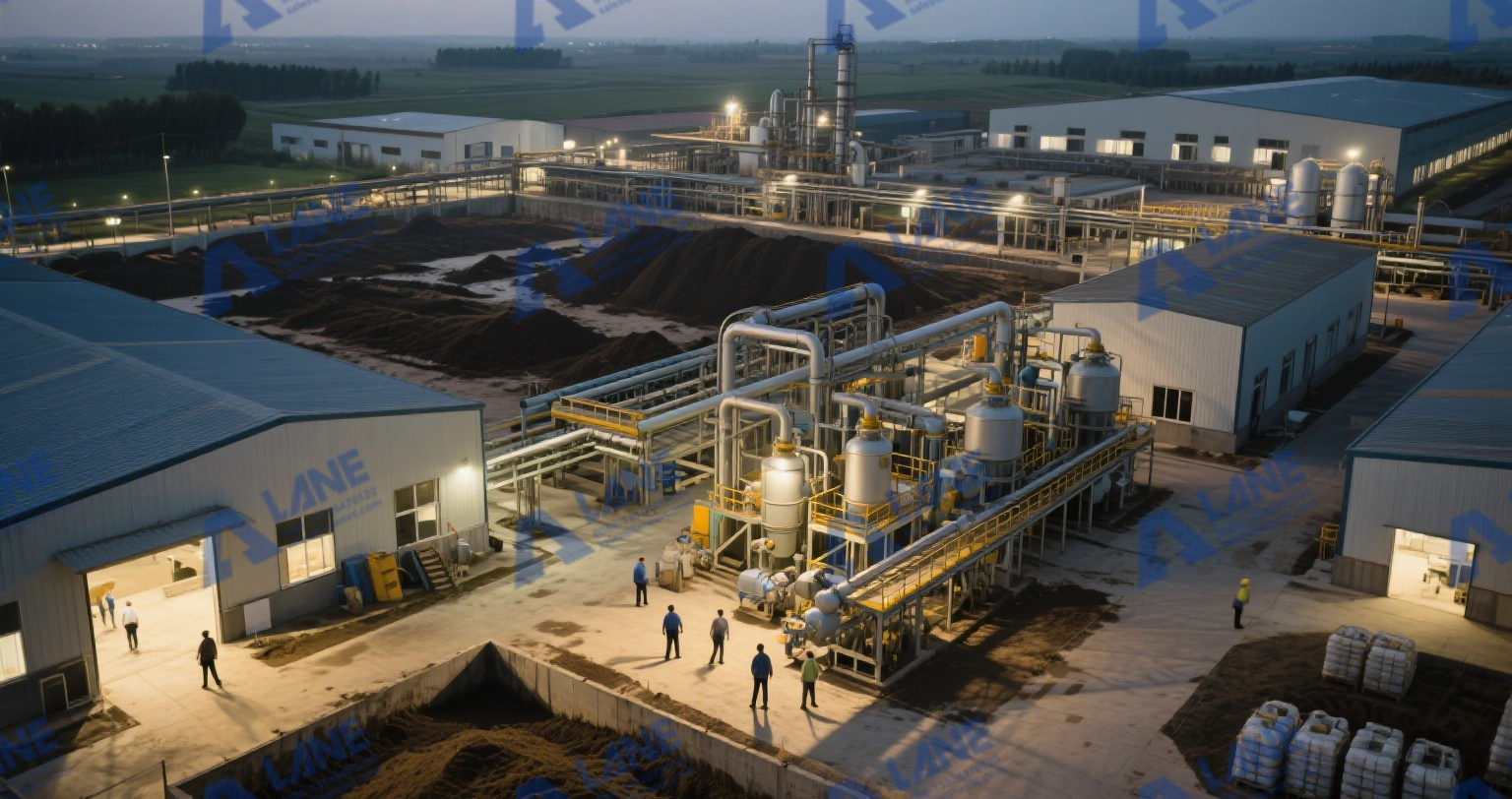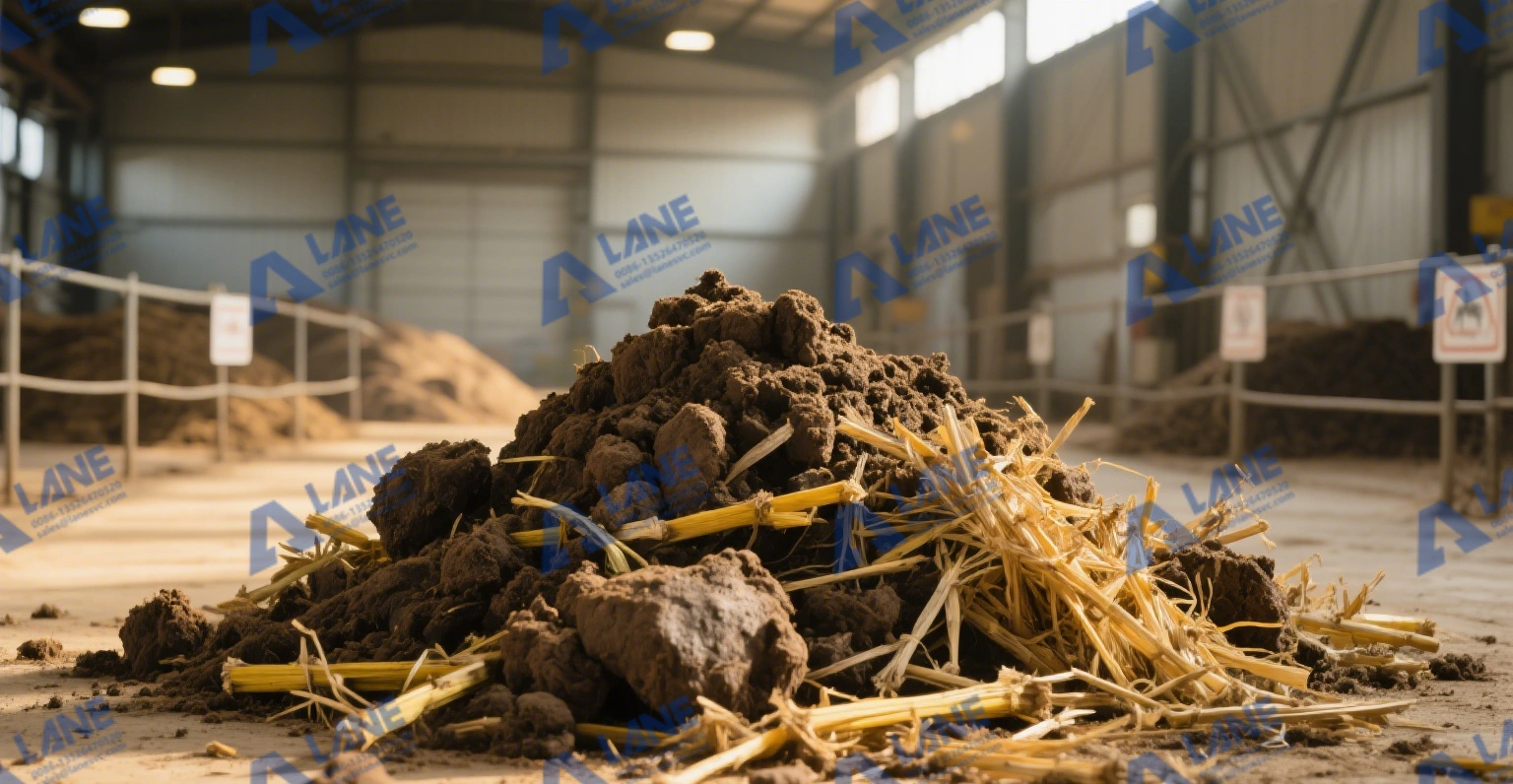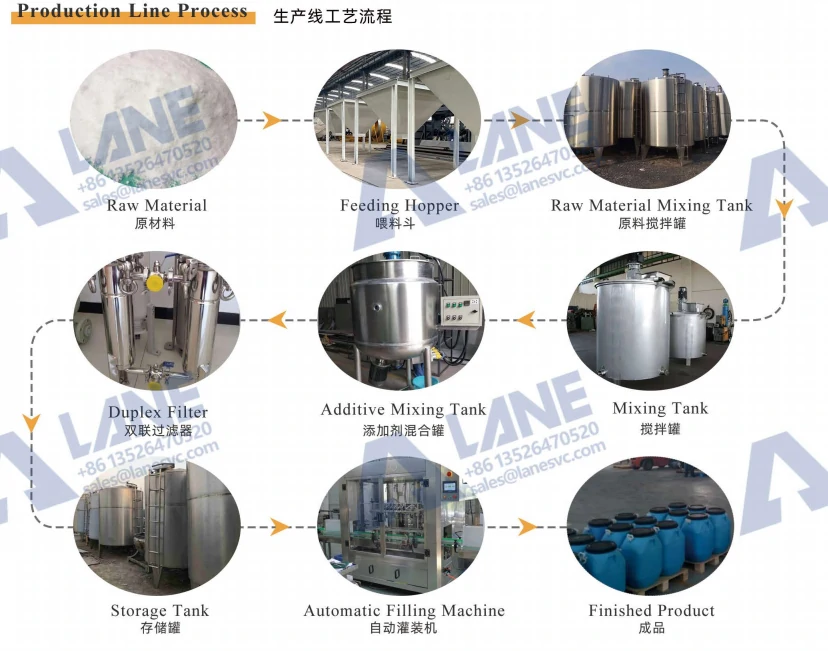
Transforming Waste into Value: The Role of a Manure-Based Liquid Fertilizer Processing System
A manure-based liquid fertilizer processing system has emerged as one of the most effective technologies for converting agricultural waste into valuable liquid nutrients. By leveraging advanced equipment and optimized engineering designs, farmers and agricultural enterprises can transform livestock manure into sustainable and profitable solutions, thereby increasing crop yields while reducing reliance on chemical fertilizers. The growing demand for environmentally friendly agriculture has positioned these systems as the cornerstone of modern agriculture.

Unlike traditional composting or simple nutrient extraction, a manure-based liquid fertilizer processing system integrates precise mixing, controlled fermentation, filtration, and storage into a continuous workflow. Companies like LANE have further developed this concept, providing turnkey solutions with high-quality stainless steel equipment, modular design, and end-to-end support, enabling global enterprises to adopt this system more efficiently and flexibly.
Manure is rich in nitrogen, phosphorus, potassium, and trace elements essential for plant growth. Yet, unmanaged manure can create pollution problems. A manure-based liquid fertilizer processing system bridges this gap:
It reduces methane and greenhouse gas emissions by controlling manure decomposition.
It converts waste into a high-value, easy-to-apply liquid fertilizer.
It supports circular farming, where nutrients are recycled back to the soil.
With the global push toward carbon neutrality and soil health restoration, this technology is not only a sustainable option but also an economically sound investment.
Every step of the system relies on robust, operator-friendly equipment designed to maintain product quality and consistency. Below is a breakdown of the essential components:
| Stage | Equipment | Function |
| Raw Material Handling | Manure receiving tank | Initial collection and buffering of livestock manure |
| Mixing & Pre-treatment | Stainless steel mixing tank | Ensures uniform slurry, adjusts pH, and prepares for fermentation |
| Fermentation | Vertical fermentation tank | Converts organic matter into plant-available nutrients |
| Filtration & Clarification | Dual filter | Removes large particles and impurities, ensuring a smooth liquid |
| Nutrient Adjustment | Automated dosing system | Fine-tunes NPK and micronutrient ratios |
| Storage & Packaging | Stainless steel storage tank | Maintains product stability before bottling or bulk distribution |

A well-run manure-based liquid fertilizer processing system follows a repeatable, instrumented routine. The sequence below spells out what operators actually do on shift, the equipment they touch, and the quality checks that keep every batch on-spec.
Step 1 — Receiving & Pre-Screening
Livestock manure (single or mixed sources) is unloaded into a sealed manure receiving tank. Run the bar screen or rotary strainer to remove fibers, grit, and foreign matter. Log source, solids %, and temperature. Target a pumpable slurry (typically 8–12% TS) before transfer.
Step 2 — Slurry Make-Up & pH Conditioning
Meter the screened slurry into a stainless steel mixing tank. Start the agitator, then add make-up water or recirculated process liquor to hit the design viscosity. Adjust pH into the preferred microbial window (commonly 6.5–7.5) using approved acids/alkalis. If your formula includes micronutrients or enzyme starters, dose now for even distribution.
Step 3 — Thermal Pre-Treatment (Optional, CIP-Ready)
If the feed shows high pathogen load or foam-forming volatiles, bring the slurry through an in-line heater/plate exchanger to the setpoint (for example 55–60 °C for 30–60 min, per your SOP). This improves downstream stability. Confirm with temperature and hold-time records; release only when the batch meets the pre-treatment spec.
Step 4 — Primary Fermentation
Transfer the conditioned slurry to the vertical fermentation tank. Engage variable-speed aeration or mechanical mixing per recipe. Maintain temperature (e.g., mesophilic 35–40 °C or thermophilic 50–55 °C) and dissolved oxygen within set limits to favor beneficial consortia. Online probes track pH, DO, ORP, and temperature; the PLC logs trends and alarms. Foam sensor triggers antifoam dosing if needed. Typical HRT runs 24–72 hours depending on target stability and odor reduction.
Step 5 — Secondary Maturation/Equalization
From the Vertical fermentation tank, overflow to a maturation/ EQ tank to dampen batch-to-batch variability. Gentle agitation prevents settling while volatile acids are polished by residual biology. Pull in-process samples for TAN (total ammonia-N), viscosity, and odor panel sign-off before clarification.
Step 6 — Clarification & Polishing (dual filter)
Pump the liquor through a staged dual filter: a coarse cartridge (e.g., 50–100 µm) followed by a fine element (e.g., 5–10 µm). Differential-pressure gauges indicate loading; swap elements per SOP to avoid channeling. Inline turbidity and flow meters verify clarity and throughput. Record lot numbers of filter media for full traceability.
Step 7 — Nutrient Balancing & Stabilization (Automated Dosing)
Route polished liquor to a clean stainless steel mixing tank for final balancing. The metering skid adds chelated micronutrients, potassium sources, humic/fulvic extracts, or amino acid concentrates to reach the labeled N-P-K and micro profiles. Stabilizers and preservatives are dosed as required by your market regulations. Confirm with rapid assays (pH, EC, density, NPK quick tests), then send a retain to the lab for ICP or Kjeldahl as per QA plan.
Step 8 — Deaeration & Temperature Conditioning
If micro-foaming persists or you’re filling at high speeds, pass through a vacuum deaerator or hold under low agitation to release entrained air. Bring temperature to the packaging window (often 20–30 °C) to protect viscosity and fill accuracy.
Step 9 — Final Filtration Guard (dual filter, 2nd pass)
Just before storage/filling, run a dual filter guard pass to capture any last-minute particulates introduced during dosing. Verify turbidity and record DP across both stages. This step protects valves, fillers, and customer equipment from clogging.
Step 10 — Storage & Agitated Hold (Stainless Steel Storage Tank)
Transfer to stainless steel storage tanks with slow-speed top-entry agitators. Use nitrogen blanketing if oxidation is a concern. Tank farm PLC tracks level, temperature, and agitator status; CIP spray balls are validated between product changeovers to prevent cross-contamination.
Step 11 — Packaging & Coding (Automated Filling Line)
Feed the line: IBCs, drums, or bottles. Calibrate the filler (mass or volumetric) at start-up and every X pallets. Print batch/expiry, apply labels, and run torque checks on caps. Pull statistically valid retains per pallet. Palletize and wrap to spec.
Operator checkpoints that protect every batch:
Before fermentation: pH and C/N ratio within spec; agitator and aeration verified.
During fermentation: temperature and DO trends stable; no prolonged alarms.
After filtration: turbidity below target; dual filter DP < changeout threshold.
Before fill: QC spot checks match formulation; viscosity/EC consistent with set batch card.
By running this cadence, a manure-based liquid fertilizer processing system delivers repeatable quality, faster cycle times, and cleaner downstream operations—three pillars that translate directly into lower costs and higher market confidence.
For decades, agriculture has heavily relied on synthetic fertilizers to increase crop yields. Although these inputs have brought immediate results, their long-term environmental pollution – soil degradation, water pollution and greenhouse gas emissions – cannot be ignored. This is where the manure-based liquid fertilizer processing system represents a paradigm shift.
Unlike synthetic alternatives, the manure-based liquid fertilizer processing systems recycle substances that were previously regarded as waste, transforming them into high-value, nutrient-rich inputs. Farmers obtain products rich in organic matter and bioavailable nutrients, while communities benefit from reduced waste management challenges. More importantly, such systems can be customized according to the specific needs of crops or soil, making them more adaptable than uniform synthetic formulations.
The expansion beyond “just fertilizer” is also critical. By introducing secondary benefits such as soil health regeneration, microbial diversity enrichment, and carbon sequestration potential, manure-based systems contribute to a holistic, regenerative farming model. For regions grappling with high livestock populations, these systems simultaneously address waste management and food security concerns, proving that innovation can deliver economic and ecological wins in one stroke.

As agriculture pivots towards climate-smart practices, the manure-based liquid fertilizer processing system is expected to become a global standard. Innovations like AI-driven nutrient balancing, solar-powered mixing tanks, and advanced microbial formulations will further optimize efficiency. Farmers who adopt these systems now are not only future-proofing their operations but also contributing to global food security.
Q1: What type of manure can be used in these systems?
Cattle, poultry, pig, and even mixed livestock manure can be processed. Pre-treatment ensures adaptability to varied feedstocks.
Q2: Is the fertilizer safe for organic farming certification?
Yes, when managed under certified protocols, the liquid fertilizer meets organic standards.
Q3: What is the lifespan of the equipment?
With LANE’s stainless steel tanks and energy-efficient systems, the average lifespan exceeds 15–20 years with minimal maintenance.
Q4: Can systems be scaled for large agribusiness operations?
Absolutely. Modular expansions allow capacity growth without overhauling the existing setup.
A manure-based liquid fertilizer processing system is more than a piece of equipment—it’s a gateway to circular farming, higher yields, and reduced costs. By choosing LANE, businesses gain access to top-tier equipment, tailor-made system designs, and lifelong support. Our commitment is to not just deliver machinery but to empower our partners with solutions that transform waste into value, and agriculture into a more sustainable future.
For more details, please feel free to contact us.
Henan Lane Heavy Industry Machinery Technology Co., Ltd.
Email: sales@lanesvc.com
Contact number: +86 13526470520
Whatsapp: +86 13526470520
Leave a Comment
Latest Posts
LANE has more than 500 successful cases and is committed to providing customers with first-class solutions, high-end machinery and equipment, and one-stop pre-sales, sales and after-sales comprehensive customer service.